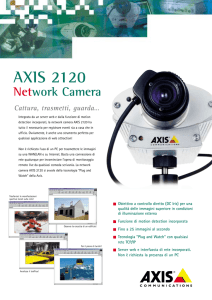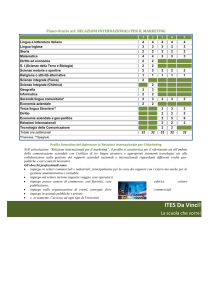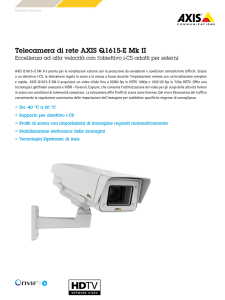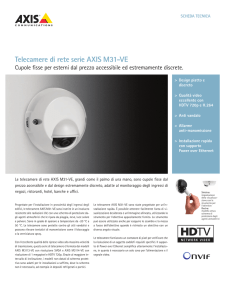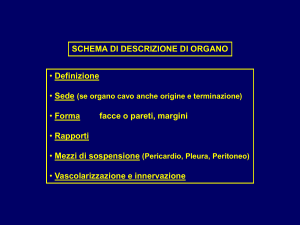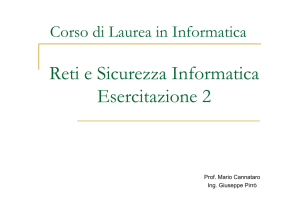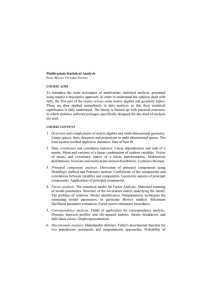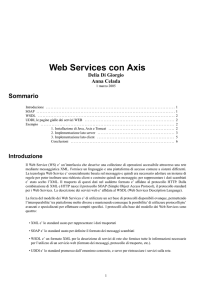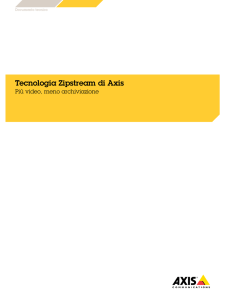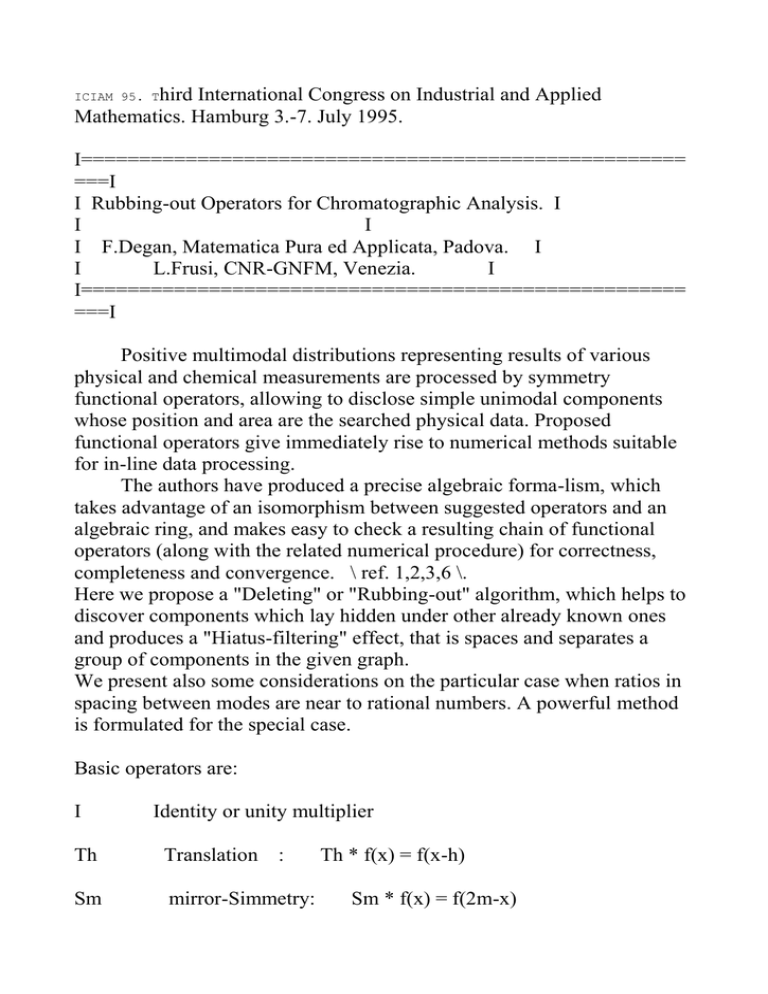
hird International Congress on Industrial and Applied
Mathematics. Hamburg 3.-7. July 1995.
ICIAM 95. T
I====================================================
===I
I Rubbing-out Operators for Chromatographic Analysis. I
I
I
I F.Degan, Matematica Pura ed Applicata, Padova. I
I
L.Frusi, CNR-GNFM, Venezia.
I
I====================================================
===I
Positive multimodal distributions representing results of various
physical and chemical measurements are processed by symmetry
functional operators, allowing to disclose simple unimodal components
whose position and area are the searched physical data. Proposed
functional operators give immediately rise to numerical methods suitable
for in-line data processing.
The authors have produced a precise algebraic forma-lism, which
takes advantage of an isomorphism between suggested operators and an
algebraic ring, and makes easy to check a resulting chain of functional
operators (along with the related numerical procedure) for correctness,
completeness and convergence. \ ref. 1,2,3,6 \.
Here we propose a "Deleting" or "Rubbing-out" algorithm, which helps to
discover components which lay hidden under other already known ones
and produces a "Hiatus-filtering" effect, that is spaces and separates a
group of components in the given graph.
We present also some considerations on the particular case when ratios in
spacing between modes are near to rational numbers. A powerful method
is formulated for the special case.
Basic operators are:
I
Identity or unity multiplier
Th
Translation :
Sm
mirror-Simmetry:
Th * f(x) = f(x-h)
Sm * f(x) = f(2m-x)
Hm
0
Truncation : if x<m then Hm * f(x) = 0
else Hm * f(x) = f(x)
Null or zero multiplier
Composed Algorithms, amounting to a Decomposition Numerical
Transform analogous to Fast Fourier Transform, are the "Piegataglia"
(fold and cut) and the "gomitolo" (roll-up or periodical transform), which
have already been presented elsewhere \ref. 1,3\.
The Hiatus and the Deleting algorithms are useful to reduce the
complexity of the multimodal distribution, by subtracting components
whose positions are already known, with the aim of disclosing hidden
components or of splitting the whole graph into two distinct groups of
components.
First of all it is necessary to find a good can-didate for a separation axis.
Such an axis should cut the tails of two partially overlapping groups of
components, leaving on opposite sides the nearest mode of each group.
Let call it a T_axis: an ideal position for it is the crossing point of
opposite-sloping sides of partially overlapping groups of components, but
the choice is not critical.
Next, an axis is to be found, which should be quite close to a mode, or
better, to the middle point of the "support" of the group considered. Such
an axis behaves as a pivot for simmetry decomposition and we call it a
S_axis.
Operations to be done are traslations and mirror-symmetries, wich
separate a component or a group of com-ponents from the heap of the
others and admit generalized inverses, as for algebraic-group operations.
We first create composed operators (I-Sm) and (I+Sm): that is a symmetry
around the S_axis placed at m, subtracted or added whith Identity. They
are the seeds of the generators of symmetric and antisymmetric
component.
We further build up composed traslation operators.
The amount of first traslation is: Dx=T_ax-S_ax, that is the distance
between separation candidate T_axis and de-composition one S_axis.
Subsequent even multiple trasla-tions are: D2x=2*Dx,D4x=4*Dx, etc. .
Using such multiple traslations we define the operator I+T: the sum of the
identity and of all subsequent even traslations D2x, D4x, D6x, ... etc. .
Finally, we compose truncating operators H so as to define a window
centered around T_axis and with width 4*Dx. Let call W such truncating
composed operator.
Let us now extract from the original data a "mostly-symmetric"
block and a "mostly-antisymmetric" one: the first by applying the (I+S),
(I+T) and W operators, the second by applying (I-S), (I+T) and W. Blocks
so extrac-ted are summed up together and the result is halved and
subtracted from the original data.
The resulting distribution is characterised by near to zero values
inside the interval defined by W. Differences from zero amount to (small)
positive and negative areas, shaped like double curvilinear triangles,
which store enough information to complete the descrip-tion of the
selected group of components.
In fact transport operations have added sums of fractions of tails to
the symmetric and antisymmetric part of the windowed data. These sums
must be separeted and each addendum attributed to its true competent
shape.
The problem of separating tails seems mathematically indecidible:
sums of symmetric functions with just the same mirror axis cannot be
separated by means of symmetry methods, but the S_axis and the T_axis
may be chosen with some freedom and physical considerations allow to
get reliable solutions. In fact physically interesting data are characterised
by a definite width of support; e.g. bell shaped chromatographic single
component graphs may suffer of various degree of asymmetry, skewness
or curto-sys, but surely are zero far enough from the principal mode.
To cope with different situations we distinguish between "short-tail"
,"medium-tail" and "long-tail" data. "Short-tail" data are very easily
decomposed by e.g. "Piega-Taglia" or similar methods, or just by cutting
residual tails, with very small error. If data are not short-tailed,
decomposition (S) and traslation (T) axes shall be choosen whenever
possible so as to enclose the terminal segment of tail, until it becomes
close to zero (compared with accepted noise). This is just the definition of
"medium-tail" data.
If data are truly of "Long-Tail" type, i.e. when S_axis and T_axis
cannot be chosen so distant as to comprise most of the cutted tail, longer
procedures are needed. In such cases a "Rational numbers algorithm" can
be really useful.
When ratios of distances between modes are rational numbers, close
to ratios of small integers, a particular case of indecidibility could appear:
periodic transform leads different modes to superpose on the same
position. In such cases the procedure can induce to cumbersome
computations and to less precise numerical results.
On the other hand it has been possible to show that the explicit
choice of a Rational Numbers Algorithm, which emphasizes the S_axes,
will obtain exact results through numerically stable procedures (LemmaAlgorithm), \ref. 8\.
Rational Numbers Algorithm amounts to two trasforms whit
different S_axes, whose ratio of spacings from T_ax is a rational number.
The difference of the first transformed and the second one composed
with T operator, produces a graph segment, from which two groups of
components can be identified by the separation ("Hiatus") method.
Seeds of the separation method are (I-Sh1) and (I+Sh2). Axes h1 and
h2 have to be choosen not far from the center of the graph segment.
Each one of the separated groups becames a "key", that is behaves
like a known shape function, disclosing in the original heap a component
at time and allowing to roll out successive components.
The underlying algebra, checked through the iso-morphism of Th
operator whith the polinomial ring, and the criteria of choice of the
separation steps, can take advantage of automatic reasoning tecniques.
Exact methods may be completed with a fuzzy algebra in order to
decide the best choices for positions of axes and for balancing symmetric
and antisymmetric components where auxiliary informations are lacking .
References:
1 Degan F., Frusi L.
"Un'Algebra degli Operatori per le Funzioni di Distri-buzione
Plurimodali".
Rapporto n. 42, Luglio 1983. Istituto di Matematica Applicata. Universita'
di Padova.
2 Degan F., Frusi L., Jabara E.
"Decomposition of Multimodal Distribution Functions. An Operator
Algebra and some well conditioned Algorithm."
Report n.10, Dipartimento di Matematica Pura ed Applicata Universita' di
Padova. 1989.
3 Degan F., Frusi L., Jabara E.
"Operatori per l'Analisi delle Distribuzioni Multimodali" Report n.13,
Dipartimento di Matematica Pura ed Applicata Universita' di Padova.
1989.
4 Degan F., Frusi L., Jabara E., Piancastelli E.
"Decomposition of Multimodal Distribution Functions. An Operator
Algebra and some well conditioned Algorithm for Data Processing in
Automatic Measuring Instrument."
1st Symp. on Applied and Industrial Mathematics, Oct. 2-6 1989, San
Servolo, Venice, Italy.
5 Frusi L., Jabara E.
"Search of hidden components in electrophoretic graph".
6st IMEKO conf. on Measurement in Clinical Medicine.
Aug. 29-30 1990 Sopron Hungary.
6 Frusi L., Jabara E.
"Algoritmi algebrici per l'Analisi di Grafici Sperimen-tali, somma di
componenti unimodali".
I Congr. Nazionale della SIMAI .
Giugno 1-5, 1992, Firenze, Italia.
7 Degan F., Frusi L., Jabara E.,
"Linear Operators for Electrophoretic graph Analysis".
9th Hungarian Conference on Biomedical Engineering.
Feb, 17-19 1993, Budapest, Hungary.
8 Frusi L.
"Quantitative analysis of proteinous components in electrophoretic graphs
",
XIII IMEKO conference, Sept. 1994, Torino, Italia.
Algoritmo tipo "F": Filtraggio degli invertitori
Come indicato da F.Degan, alcuni algoritmi traggono vantaggio
dalla commensurabilita' dei parametri caratteristici dei treni
sui quali operano, cosicche` spesso tali treni risultano
univocamente dissociabili nelle loro componenti.
Uno in particolare di essi, che contraddistingueremo con la
lettera "F", risolve un problema proposto alla Riunione
Scientifica del CNR a Roma nel 1993. Precisamente l'algoritmo "F"
risolve il seguente treno, con
dal quale si ottiene:
e quindi
e pertanto
nonche`
e altre due analoghe, usando gli invertitori:
cumulante a destra e
cumulante a sinistra.
Le formule (A), (Ao), (B), C(), (D) sono equivalenti.
(A), (B), (C), (D) sono possibili anche se h/k e' irrazionale ed
in tal caso restano equivalenti.
Prendendo in particolare considerazione le (C) e (D) otteniamo,
con l intero positivo:
Su si determina molto facilmente una condizione di
coassialita": se essa non e' valida, sia y^ che z^ si determinano
per dissociazione binaria( ). Diversamente subentra il vero e
proprio Algoritmo F, nella fattispecie algoritmo Fs per le
simmetriche
A questo punto sono possibili numerose strategie per produrre
treni iatati indipendenti, per esempio applicando un "deleting
operator". In particolare si puo' applicare l'operatore (I-SH).
Tale operatore, se H e' in posizione paracentrale, raddoppia
doppietti antisimmetrici formati da congruenti di z, senza fare
la stessa cosa sulle congruenti di y. Allora bastera' applicare
poi (I-TK) per ottenere uno iato tanto piu' ampio quanto maggiore
e' L. Lo iato separa due gruppi indipendenti dalle (A), (Ao),
(B), (C), (D).
Una strategia abbastanza uniforme si ottiene applicando a t^ il
deleting operator (I-Th) e quindi (I-Sh) con H scelto come asse
di simmetria ancora parziale, (in modo ottimale vicino alle
componenti centrali del treno). Purtroppo H appare ancora
correlato al tipo di rapporto razionale h/K e pertanto non e'
stato possibile fissare per ora con formula l'algoritmo completo.
* * *
Essendo ormai noto P, un risultato simile si ottiene anche da:
ma allora il numero delle componenti e` vincolato a p e non puo`
variare a piacere . Dato che in ogni caso la (F) riproduce la (E)
per rn=l la strategia da applicare all F si presenta in effetti
analoga a quella oro ora indicata.
L'uso della (E) e` senz'altro vantaggioso se le componenti sono
"cumulabili quanto occoorre" perche' consente la scelta "piu'
economica" : l deve avere il piu` basso valore atto a
adeterminare uno "slargo" appena sufficiente a contenere uno iato
attorno ad H.
Se le componenti fossero analitiche con supporto esteso a tutto
l'asse reale, si potrebbe sempre rendere grande a piacere lo
slargo indicato. E pur esenza ottenere un vero e proprio iato ,
si potrebbe contare su un intervallo dove i valori di t^ ( e
pertanto gli errori) sono pronosticamente approssimabili a zero.
Ma proprio in questo caso appare evidente la differenza tra i due
casi h/k razionale e h/k irrazionale
Infatti se h/k e' razionale si puo' usare la F in alternativa
alla C. Non cosi' se h/k e' irrazionale perche' allora il treno
risulterebbe composto in ogni caso da un numero infinito di
componenti e sarebbe deducibile da (B), oppure noto fin
dall'inizio. Ma cio' comporterebbe comunque una approssimazione
complicata dal fatto che il treno (A), cosi' come (C) e (D), non
consente stabilizzazione esatta.


